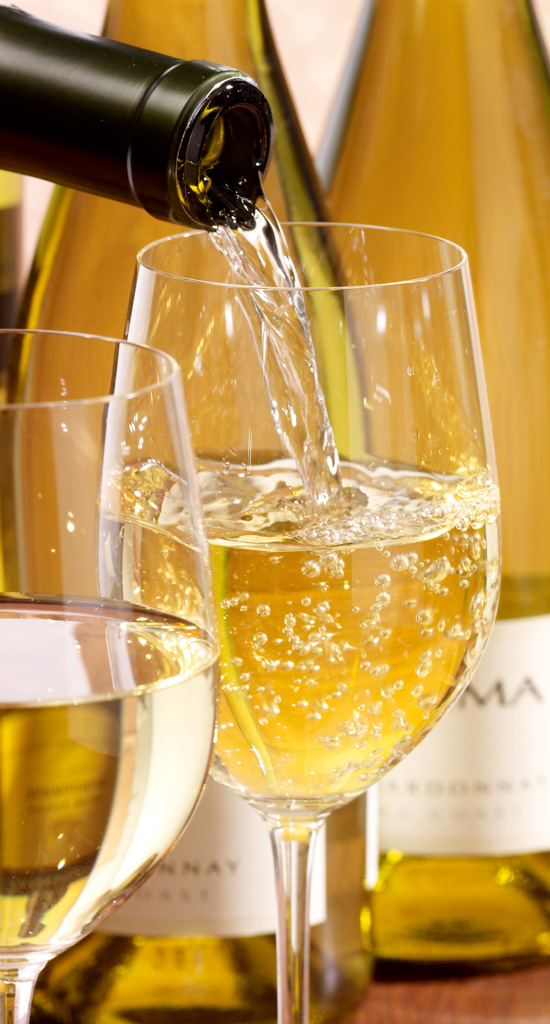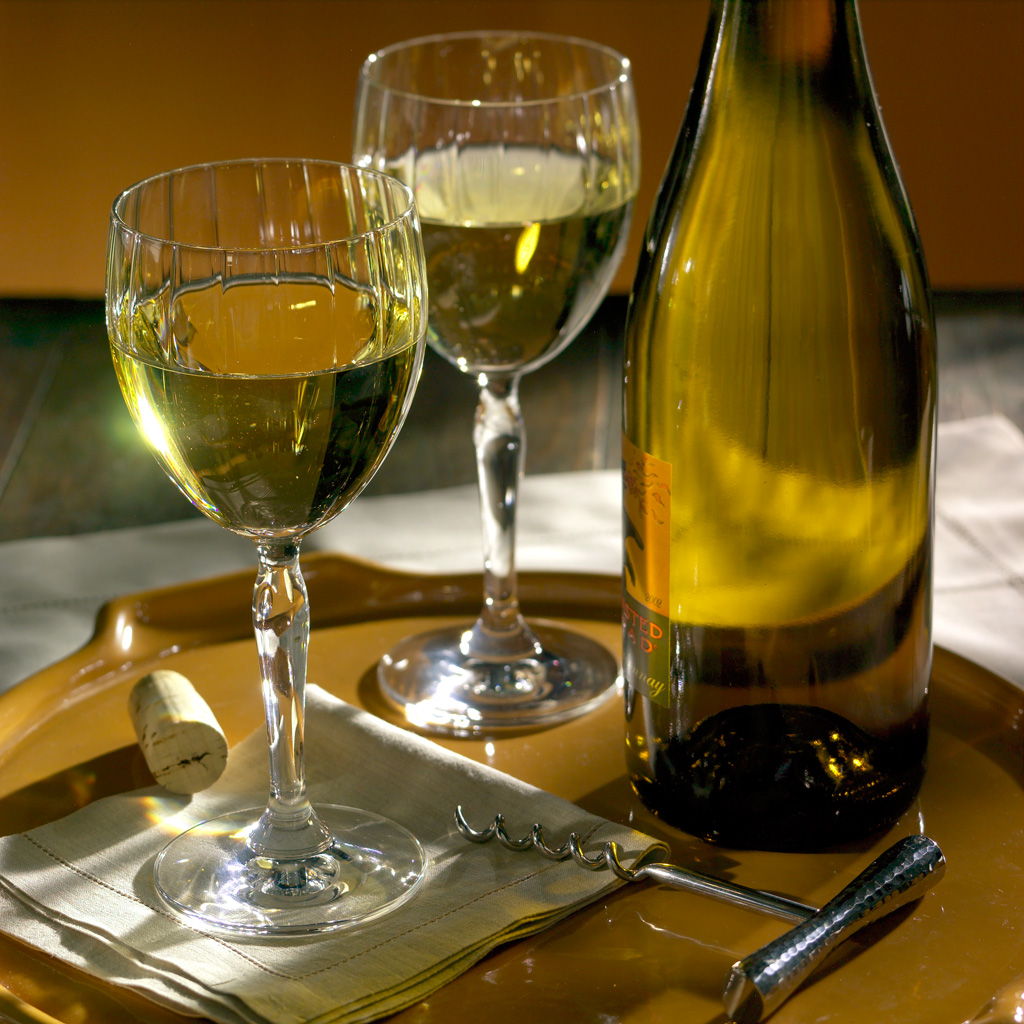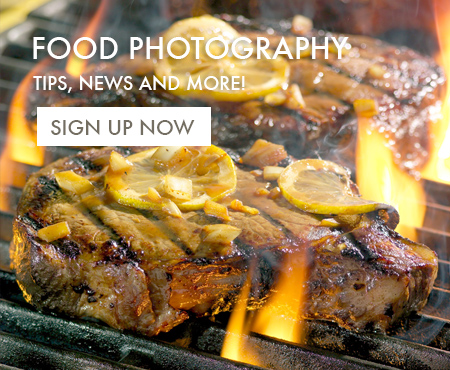
- Okay, this is a terrible example, but I have photographed many a wine bottle, but I can’t seem to put my hands on one right now. But… If you look at the very feint highlight running down the left hand side of the bottle, you’ll see (not very well), how I like to light wine bottles. I’ll have to dig up a another bottle shot somewhere… :o)
When photographing wine bottles, what are your tips for lighting them? – Q & A #3
I have to admit that I don’t have any “wine only” clients, but I’ve photographed wine bottles a bunch of times and I’ve come up with a great trick that I’d like to share with you. It’s not really a prick, but just a technique. It works a lot better with a little help from Photoshop, but even without, the technique works pretty well…
So the challenge is to get a nice long highlight that isn’t too bright, down the side of the bottle, right? if you have soft boxes, you’ve probably tried using them nice an low, but the highlights either end up being the wrong shape or they’re too bright. And, ir you use multiple light sources, the bottle ends up with too many highlights. Here’s the solution. Instead of using a multiple lights, I try to use one and then I use a long narrow (about a foot wide, and three feet tall ) white reflector. The trick is to keep the light up high enough so that the highlight is minimized in the shoulder of the bottle. If this bothers you in the end, it’s usually pretty easy to retouch out of the shot. The white reflector is placed vertically on the table surface, twisted a little toward the light source. This will give you the nice highlight along the length of the bottle. The example shot above was photographed from too high of an angle to illustrate this technique very well. The highlight on the wine glass does work well though…
You can manipulate the intensity of the reflector card highlight by either twisting the card toward or away from the light source. As you twist the card, the width of the highlight will change. So, what often happens is that you get the brightness where you want it, but the width doesn’t work. At this point, you can do a couple of things… You can cut a different sized reflector, of change the distance from the subject, or you can put some sort of “light cutting” go-bo between the light and the reflector. It takes some playing around, but that’s half the fun of food photography anyway… :o)
Let me give you a little advice about shooting wine, especially red wine. Try to steer away from photographing wine on white surfaces. What happens is that you end up with a frosted look on the bottom of the glass, cause by the white of the surface. This is pretty much impossible to get away from without extensive retouching or double exposures.

The highting on the bottles doesn’t show as well of white wine as it does on red, but still you get the idea. One thing that many novice food photographers doesn’t realize is that each shot is different. Yes, I may have a standard lighting setup that I start out with, but EVERY shot is different and requires its own special lighting. The setup is just a starting point, but each subject will require you to modify your lighting to deal with some issue or another.

One of the best way to deal with the reflections in wine bottles, is to light them from above so there aren’t any highlights to deal with at all…
Thanks for visiting the Food Photography Q & A Page. If you have a question you’d like to have answered by a professional food photographer and you think that other people on this blog might be interested too, please ask me your food photography question, and I’ll get to it as soon as I can. BTW – I tend to prioritize answering the questions of people that subscribe to my mail list… (hint, hint… :o)



Thanks Michael for addressing this question of mine! Great tips and suggestions as always.
To be honest, I was a bit disappointed that I couldn’t find any images where I had sort of “classic bottle lighting”… If I find some time, I think I’ll just throw down a bottle (if I can steal it off my wife before she drinks it) and I’ll do a post just on that. It’s a pretty cool technique and works very well. To get it to work though, you have to shoot from a low angle, and the shots I posted were photographed from too high an angle. stay tuned… :o)